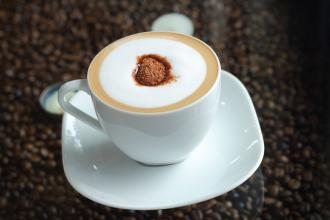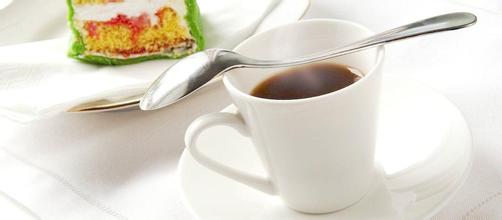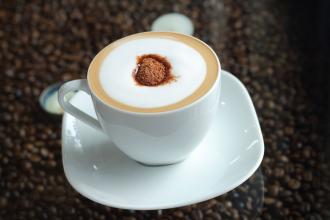Coffee originating place Coffee emotion
Place of origin editing
In ancient China, Shennong tasted all kinds of herbs and recorded them one by one, so that later generations could have a systematic understanding of many plants. There is no such person as Shennong in the western world, let alone any written record, so there are different legends about the origin of coffee. Among them, the most common and popular story is the story of the shepherd.
In ancient times, Arabs first dried and boiled coffee beans and drank the juice as stomach medicine, thinking that it could help digestion. Later, it was found that coffee also had a refreshing effect, and because Muslims strictly prohibited drinking, coffee was used instead of alcoholic beverages as a refreshing drink. After the 15th century, Muslims who made pilgrimages to the holy land of Mecca brought coffee back to their places of residence, and coffee gradually spread to Egypt, Syria, Iran, Turkey and other countries. The entry of coffee into Europe should be attributed to the Ottoman Empire of Turkey at that time. Because the coffee-loving Ottoman army marched westward to Europe and was stationed there for several years, when the army finally withdrew, it left a large number of supplies, including coffee beans. People in Vienna and Paris were able to develop European coffee culture based on these coffee beans and the cooking experience gained from the Turks. The war was originally occupied and destroyed, but it unexpectedly brought about cultural exchange and even integration, which was unexpected by the rulers.
Westerners are familiar with coffee with a history of three hundred years, but in the East, coffee has been widely used as a drink in all walks of life in the East. Coffee appeared earliest and most accurately in the 8th century BC, but as early as Homer's works and in many ancient Arab legends, a magical, dark, bitter, and highly stimulating drink has been recorded. Around the 10th century AD, Avicenna,980-1037 was using coffee as a medicine to treat diseases. There is also a strange story from the 15th century in which it is said that a Yemeni shepherd saw a group of goats picking reddish berries from a bush. Soon the goats became restless and excited. The shepherd reported this to a monk, who cooked some berries. Then extract a bitter, strong drink that can drive away drowsiness and drowsiness.
Although coffee was found in the Middle East, coffee trees first originated in Africa, a region now belonging to Ethiopia, called Kaffa, from which coffee spread to Yemen, Arabian Peninsula and Egypt, where coffee developed rapidly and soon became popular in people's daily lives. By the 16th century, early merchants had sold coffee in Europe, thus introducing coffee as a new drink into Western customs and life. The vast majority of coffee exported to the European market comes from Alexandria and Smyrna, but with growing demand and high tariffs imposed by import and export ports, as well as increased knowledge of coffee planting, dealers and scientists are experimenting with transplanting coffee to other countries. The Dutch planted coffee trees in their overseas colonies (Batavia and Java), and the French in Martinique (in Latin America) in 1723, and then in the Antilles. Later, the British, Spaniards and Portuguese began to invade the tropical coffee-growing areas of Asia and America.
Coffee cultivation began in northern Brazil in 1727, but poor weather conditions gradually shifted the crop to other regions, first in Rio de Janeiro, and finally to Sao Paulo and Minas (circa 1800-1850). Here coffee found its ideal growing environment. Coffee cultivation grew here until it became Brazil's most important source of economy. It was between 1740 and 1850 that coffee cultivation reached its highest popularity in Central and South America. Although coffee was born in Africa, cultivation and household consumption were introduced relatively recently. In fact, it was the Europeans who brought coffee back to its homeland and introduced it into their colonies, where it flourished because of favorable land and climatic conditions.
Coffee editor
1. Jamaica (Jamaica)
When it comes to Jamaica, we immediately think of "Blue Mountain" coffee. Rare and expensive blue mountain beans, originally from the Wallensford Coffee Garden, have now expanded to the Blue Mountains, which are more than 1,000 meters above sea level. as long as the tree species and treatment procedures of the estate meet certain standards, the government will issue a guarantee to allow the use of the name "Blue Mountain". It used to be the protagonist of coffee mythology, but many people think that the legendary characteristics-rich aroma, complete texture, perfect combination with even and palatable sour taste-are no longer there, and the beautiful sour taste that existed 15 years ago can only be found in memories. In spite of this, its price still goes up. In Taiwan, the retail price of guaranteed raw beans is usually more than 2000 yuan per kilogram. In the market for raw beans, which are commonly packed in gunny bags, blue mountain beans that insist on barrel packaging show their extraordinary price. The term "Jamaica High Mountain" refers to coffee beans grown in other mountains less than 1,000 meters on the island, which are of relatively ordinary quality and have a mild texture and sour taste. As for "Blue Mountain Blend" or "Blue Mountain Style" coffee, it is usually a combination of good Colombian beans, intended to imitate the taste of Blue Mountain, and has nothing to do with Jamaica. You won't find any real blue beans in Blue Mountain coffee.
two。 The Dominican Republic (Dominican Republic)
Beans from the Dominican Republic are often called "Santo Domingan" (their old country name), and the coffee plantations there are mainly around the mountains in the middle of the island. There are four kinds of washed alpine coffee on the market: Cibao, Bani, Ocoa and Barahona. The latter three are especially praised. The sweet taste of soft ripe fruit is very similar to that of Haitian coffee, while Balahona has a high acidity and a thick taste of typical Caribbean beans, which is close to the Jamaican mountains in quality and characteristics. Baking to medium depth best highlights their sweetness.
3. Cuba (Cuba)
Cigars, coffee and sugar cane, as the three major industries of the Republic of Cuba, enjoy a high reputation in the world. Cuban Crystal Mountain Coffee ranks among the top in the world. Crystal Mountain is adjacent to Jamaica's Blue Mountain Mountains and has similar climatic conditions, which is comparable to Jamaica's Blue Mountain Coffee. Similarly, the annual output of imported coffee from Crystal Mountain in Cuba is not high, so most of the time there is no market.
The most representative is the "Cubita Coffee" of the three major coffee in Cuba, which is known as the coffee with unique Caribbean flavor and has become the designated coffee of the Cuban embassy.
4. Puerto Rico, Puerto Rico
Beans, named after Yauco Selecto, are the best example of Caribbean beans. They are rich in texture, balanced in taste, gentle but complex and deep. Deep-baked Caribbean beans do not have the rough burning taste common in other deep-baked beans and are suitable for filter kettles (Plunger or French Press) and other cooking methods that have been soaked for a long time.
5. Yemen (Yemen)
The word Mocha has many meanings. Around 600 AD, the first coffee bean far from its hometown, Ethiopia, took root in the leaf gate on the other side of the Red Sea and started the coffee industry all over the world. Since the most important export port of Yemeni coffee in the early days was the port of Mocha (now silted up), the coffee produced in Yemen was also called "mocha" beans. Over time, some people began to use "mocha" as a nickname for coffee. The situation is similar to that in Java today. Later, because the aftertaste of mocha coffee resembled chocolate, the word "mocha" was extended to be a mixture of hot chocolate and coffee. Therefore, the same is "mocha", mocha beans, mocha pot and Italian coffee in mocha coffee, but represent three meanings. Today's Yemeni mocha (Yemen Mocha) is no different from its ancestors more than a thousand years ago, and is the most advanced traditional hand-dried bean-although it varies in size and contains a lot of impurities. The two most common producing areas are Mattari and Sanani; Matali beans have more texture, chocolate and sour taste, while Shanani beans are more balanced and fragrant. Generally speaking, the average size of mocha beans is small, with the wild and spicy smell of ginger, bright and unique taste, pleasant fruit acidity, and rich wine-like texture, no wonder it is known as the Bordeaux wine in coffee. In mixed coffee, mocha usually plays a high-pitched role and is responsible for stimulating and improving flavor.

Important Notice :
前街咖啡 FrontStreet Coffee has moved to new addredd:
FrontStreet Coffee Address: 315,Donghua East Road,GuangZhou
Tel:020 38364473
- Prev

Introduction to Coffee Culture Coffee Collection
Africa is the hometown of coffee. Coffee trees are probably the coffee culture found in Ethiopia's KAFFA province. Later, batches of slaves were sold from Africa to Yemen and the Arabian Peninsula, and coffee was taken everywhere along the way. To be sure, Yemen started growing coffee in the 15th century or earlier. Although the Arabs had at that time
- Next

When was coffee introduced into China?
The history of the introduction of coffee into China is not long, and it was not until 1884 that coffee was first planted in Taiwan Province. In the mainland of the motherland, the earliest coffee cultivation began in Yunnan. At the beginning of the 20th century, French missionaries brought the first batch of coffee saplings to Binchuan County, Yunnan Province, and began to grow coffee in the mainland. Chinese people have been drinking tea for thousands of years.
Related
- Does Rose Summer choose Blue, Green or Red? Detailed explanation of Rose Summer Coffee plots and Classification in Panamanian Jade Manor
- What is the difference between the origin, producing area, processing plant, cooperative and manor of coffee beans?
- How fine does the espresso powder fit? how to grind the espresso?
- Sca coffee roasting degree color card coffee roasting degree 8 roasting color values what do you mean?
- The practice of lattes: how to make lattes at home
- Introduction to Indonesian Fine Coffee beans-- Java Coffee producing area of Indonesian Arabica Coffee
- How much will the flavor of light and medium roasted rose summer be expressed? What baking level is rose summer suitable for?
- Introduction to the characteristics of washing, sun-drying or wet-planing coffee commonly used in Mantenin, Indonesia
- Price characteristics of Arabica Coffee Bean Starbucks introduction to Manning Coffee Bean Taste producing area Variety Manor
- What is the authentic Yega flavor? What are the flavor characteristics of the really excellent Yejasuffi coffee beans?

